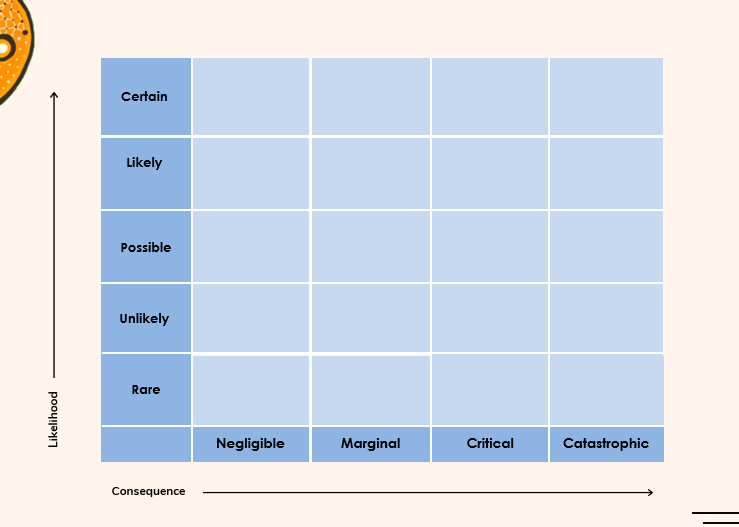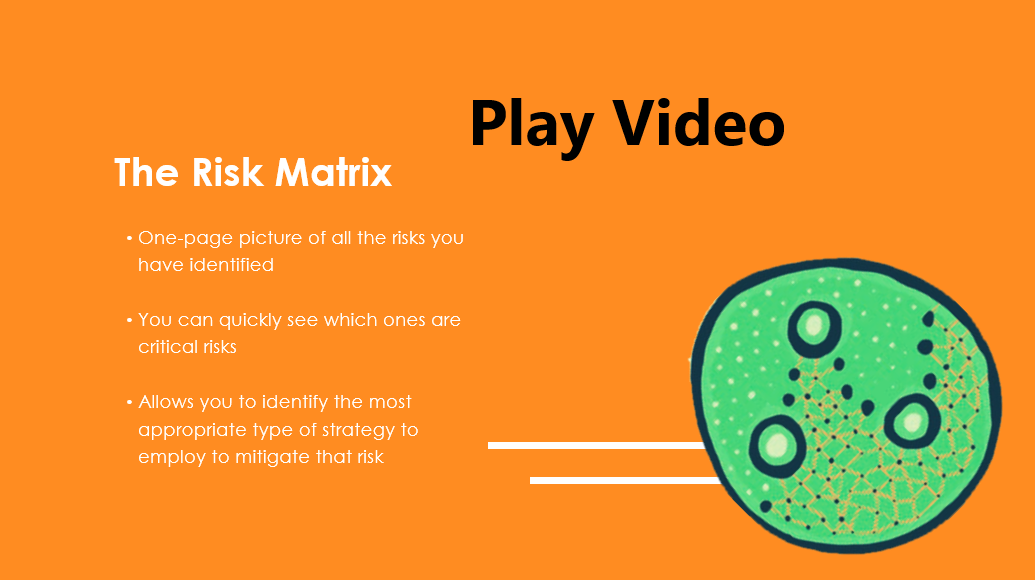In Risk Management Planning, you take 6 steps in order to prepare a Risk Management Plan for your organisation, to be prepared for the risks that face your organisation.
The 6 steps are:
- Identify all the risks
- Assess the risks
- Map the risks into a Risk Matrix
- Create strategies to manage the risks
- Manage the Risk Management Plan itself
- Monitor, test and evaluate
However, when we identify all the risks, the list is likely to be a long list and potentially overwhelming.
It is impossible to do everything at once, so there must be a method to prioritise the risks that you have identified and create suitable prioritised strategies.
Step 3 of the Risk Management Planning process is to map all the assessed risks into the Risk Matrix.
It is at this stage that you prioritise all the risks by analysing their likelihood (how likely is it to happen?) and their consequence (what will be the impact if it does happen?).
This video below is an excerpt of 5 minutes from a 10-minute introduction to the Risk Matrix contained in our online Training/Workshop called Risk Management Planning for Indigenous Organisations. The video will explain the use of the Risk Matrix.
The Risk Matrix is made up of intersecting square with the Likelihood Ranking on the left and the Consequence Ranking at the bottom.
Here again, is an example of a Risk Matrix:

Risk Matrix 1
As can be seen in the video, once you map the individual risks into the Risk Matrix:
- you have a one-page picture of all the risks you have identified
- you can quickly see which are your most critical risks (those with a high likelihood of happening and with a high consequence if it happens)
- it allows you to set priorities according to the level of risk that each risk identified represents
- it allows you to identify the appropriate type of strategy to employ.
There are four types of strategies that you can employ depending on the level of risk:
- If the level of risk is critical, you can employ "Immediate Action" strategies
- If the level of risk is high, you can employ "Rigorous Management" strategies
- If the level of risk is moderate, you can employ "Manage and Monitor" strategies
- If the level of risk is low, you can employ "Accept But Monitor" strategies.
OTS Management has designed and created an online product to assist Indigenous organisations to prepare their own Risk Management Plan in-house without the use of expensive consultants.
Through a series of video lessons and workshops, accompanied by worksheets that can be downloaded at the appropriate times, you can take the step-by-step process to prepare your own Risk Management Plan.
Learn more about it by using this link here.
Don't forget to subscribe to our "Managing Indigenous Organisations" blog which provides regular ideas, tools and resources to help you build a sustainable and effective organisation.
We have also prepared a free Whitepaper that you can download for free here, called The Building Blocks of Organisational Resilience, where we identify 6 building blocks you need to develop in your organisations in order to be resilient and effective for your members.



